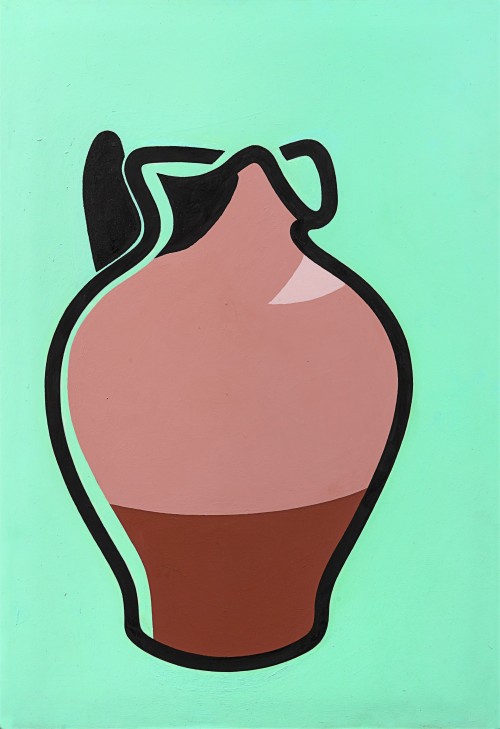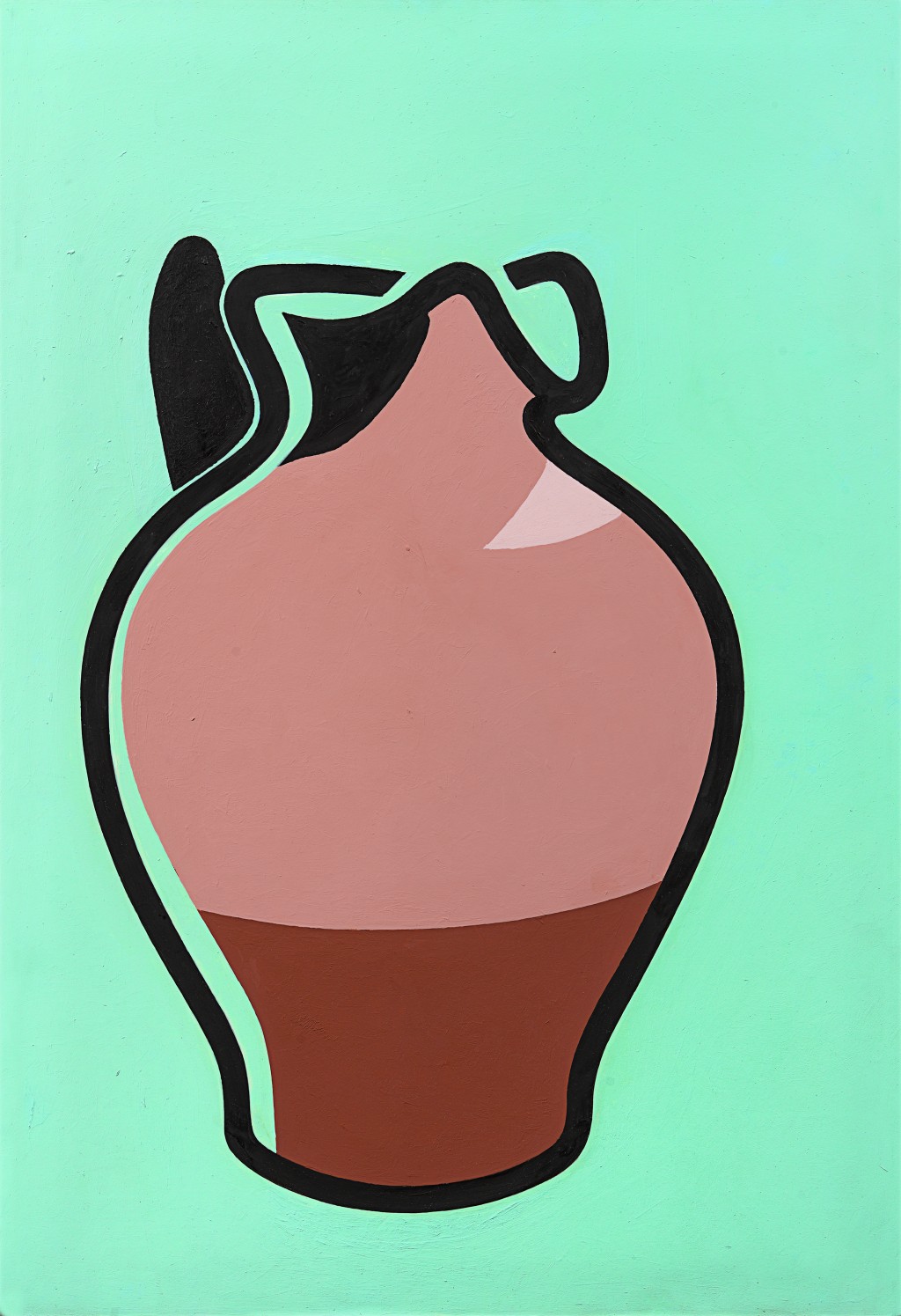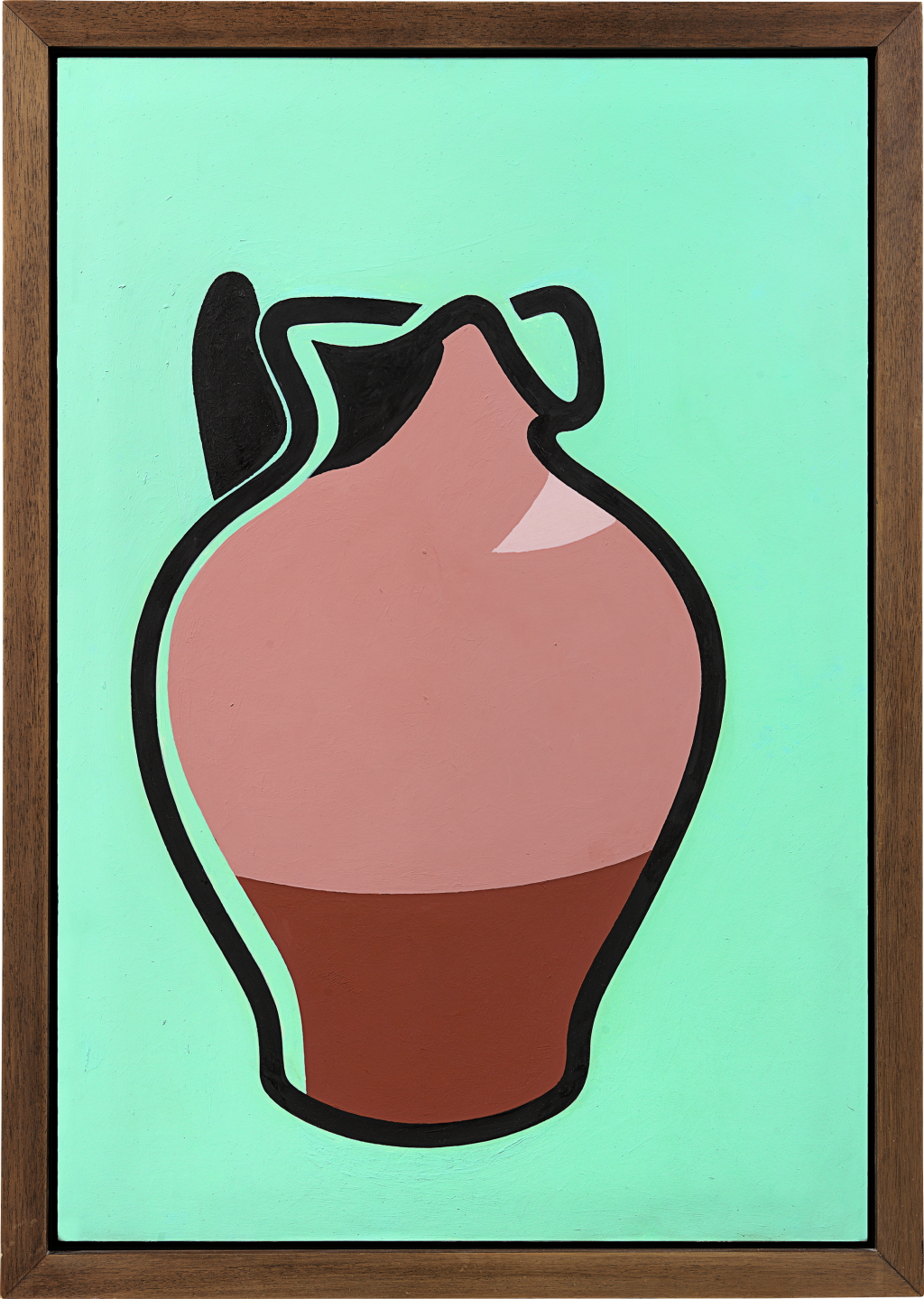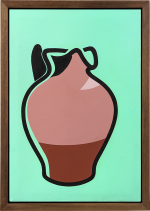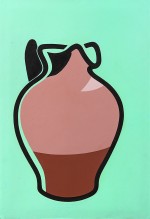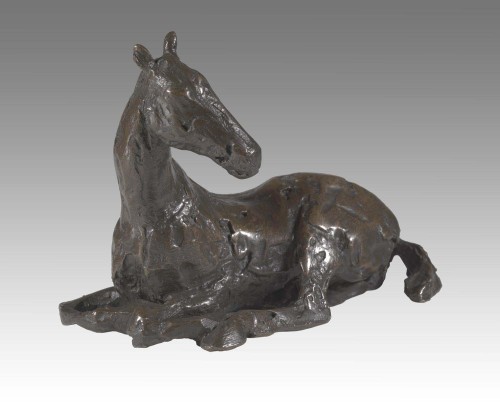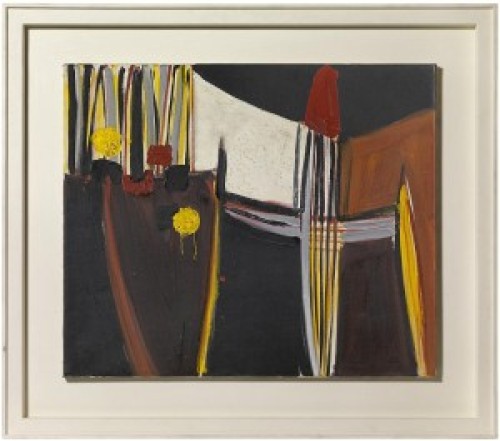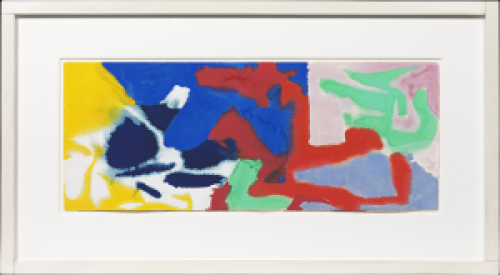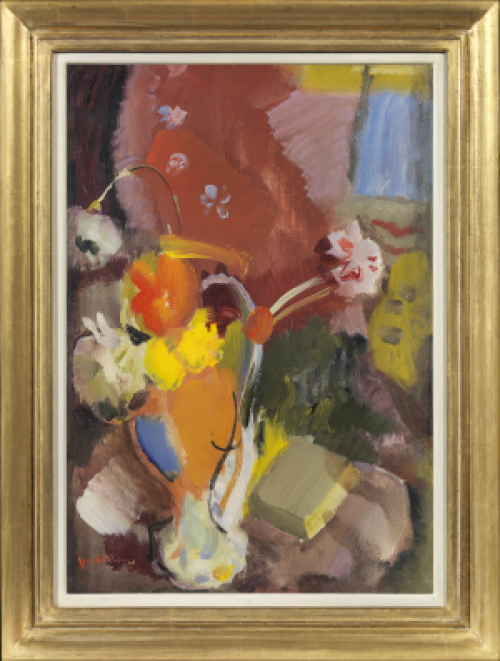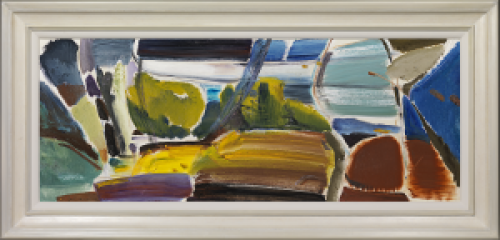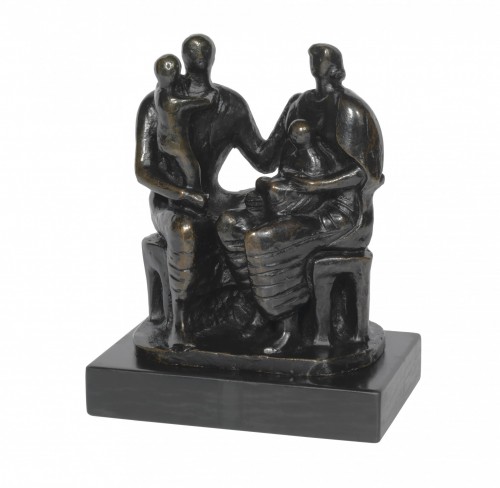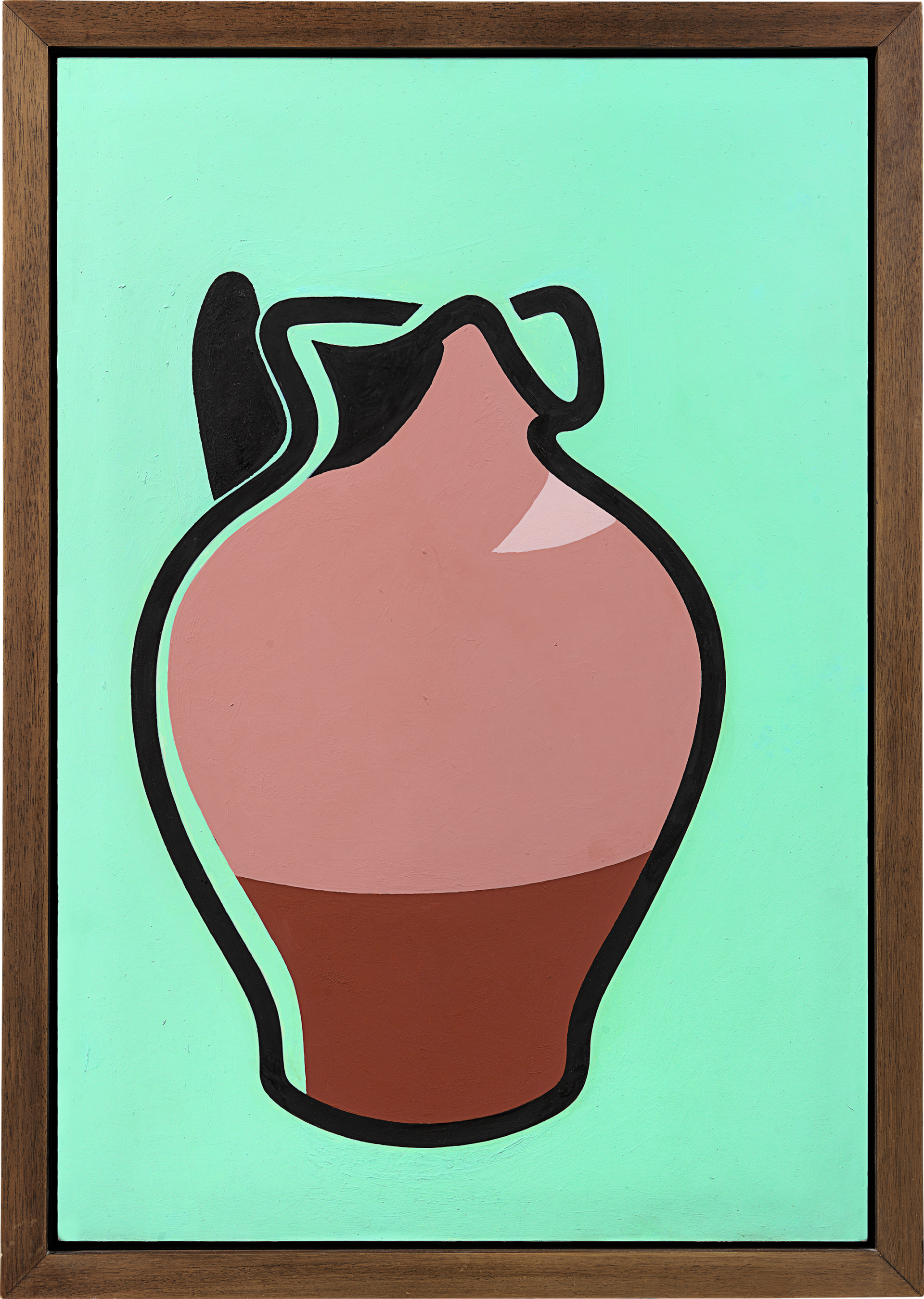PATRICK CAULFIELD RA
1936 - London - 2005
Ref: CC 195
Brown jug
Signed, dated and inscribed with the title on the reverse:
BROWN JUG / Patrick Caulfield ’82
Acrylic on board: 31 ¼ x 21 ½ in / 79.4 x 54.6 cm
Frame size: 34 x 24 in / 86.4 x 61 cm
Floated in its original shadow-box frame
Provenance:
The artist;
Waddington Galleries, London [B35860];
Alan Cristea, London
Private collection, UK
Exhibited:
London, Waddington Galleries, Works on paper, 2nd-26th May 1984, cat. no.5, illus. in colour p.7
Paris, Galerie Papillon Fiat, Patrick Caulfield, 21st April-9th June 2001
London, Alan Cristea, Patrick Caulfield: Prints 1964-99, 14th July-5th September 2009 (catalogue untraced)
‘My subject matter has no specific geographical situation, it could be anywhere in the world. That’s why I use certain imagery rather repetitively, such as pots. Greek pots picked up from the sea bed could have been made last week, they are of a similar form, retain the same function and are equally compelling but without date – this is the antithesis of the Pepsi-Cola bottle.’[1]
Patrick Caulfield reinvigorated the traditional still life subject in his iconic modern life paintings, depicting vibrant vessels with graphic sophistication throughout his career, in works such as Coloured still life, 1967, at the Pallant House Gallery, Chichester, currently part of their exhibition, The Shape of Things: Still Life in Britain. Caulfield’s pots of the 1980s pared-back the profusion of imagery, multiple styles and setting from his large-scale interiors to produce more selective, concentrated paintings. Brown jug is a powerful example, its voluptuous form painted in flat areas of pink and terracotta defined by thick black lines against an incredible aqua ground. Sections of black and light pink suggest the fall of light on three-dimensional form, as does the open lip leading a line of aqua down the left side of the vessel, playing between reality and artifice. Caulfield may have revisited the subject in the light of his painting retrospective at the Walker Art Gallery, Liverpool and Tate Gallery, London in 1981, as well as a retrospective of his prints held later that year at Waddington Graphics.
[1] Patrick Caulfield, Peter Blake, Patrick Caulfield, Howard Hodgkin: Paintings from the 60s and 70s, exh. cat., Waddington Galleries, London 1995, p.18.

